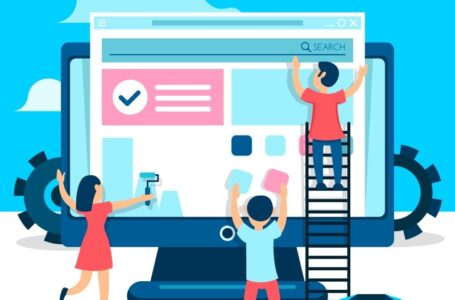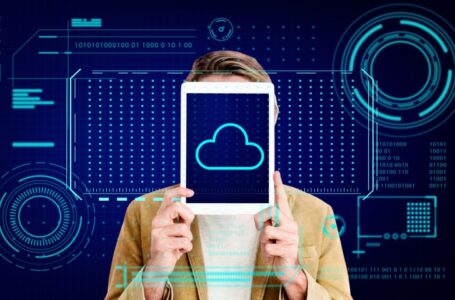Reinventing Web Design: Grapes Studio Lets Small Businesses Build Sites in Minutes
5 strategies to become a more impactful, buyer-driven marketing org

We got out of lockdown and were sitting in a bar with a group of marketing colleagues at an industry event that reflected the past few years and all the transformation B2B marketing has gone through.
What decisive decisions will you make? What changes, bets, and/or investments did you make 12 or 18 months ago to accelerate marketing impact?
This is how I try to function and think. Look through the telescope to imagine what the world looks like. Then look through the windshield to see what awaits you to plan and execute. And then pull out the microscope to understand the important details and nuances.
B2B marketing is changing dramatically
B2B marketing is undergoing a dramatic shift in requirements, responsibilities, and expectations. Now is the time to predict what the world will look like in the next two to three years and develop a strategy and roadmap. This shift is driven by shifts in buyer habits and expectations – all of which have been accelerated and amplified by the pandemic. In the B2B world, buyers have gone digital, doing homework remotely, and making decisions in distributed teams. It has blown up the traditional buyer-seller relationship and changed B2B marketing forever.
I look forward to meeting my CMO and marketing colleagues to chart the future. Comparing and sharing notes is valuable, especially when you can do it in person. In the meantime, let’s map out our roadmap, starting with design strategies and adopting a buyer-centric approach to deliver more value to your business and customers.
Adopt a buyer-centric marketing strategy
80% of B2B buyers want a B2C experience, according to Salesforce’s Annual Connected Customer Study 2020. However, we still operate on the basis of internal goals and processes. Exhibition A:
Programs are run based on our product launch dates or scheduled industry events, not the buyer’s process or timeline.
Even our marketing teams are organized around our internal functions and programs. We don’t even realize how much these discreet internal structures make us struggle to capture the attention of buyers. For example, the event team invites professionals to the next gathering, the digital team runs ads and content, the content delivery team focuses on lead generation, and the marketing team sends emails to “potential customers” to attempt to provide a single channel. It’s all up to our internal processes and timing, not the buyers.
And to put an exclamation point on this introspection-centered challenge, we use marketing channels as the exact form of truth about buyers and the buying process. Funnels are important for measuring, not for driving the purchase journey. When we say things like “our leads didn’t convert” it’s usually because the marketing funnel has been turned into an artificial construct based on their internal, artificial lead targeting. me, instead of actually giving the buyer control and using our tools to measure for optimization.
Going forward, what are the key factors for buyer-centricity?
- Take a long-term approach to your marketing and marketing programs in relation to your internal calendar;
- Use intent and predictive data as triggers to flag and trigger outreach and program activity, as opposed to artificial and arbitrary lead scoring models;
- Ensure our data models and go-to-market are equipped with buyer personalization, buying group coordination, and account readiness signals.
Break down barriers between your teams, technology, data, and channels
Silos are ubiquitous in marketing today, and they disrupt our impact as well as any opportunity to be buyer-centric.
At a time when buyers crave connection, silos create random, impersonal touchpoints that leave buyers feeling empty and your marketing lackluster. Silos also have a significant negative impact on how your teams work, your technology performance, and the channels you pull your data from. Buyer-centric B2B marketplaces require connected technology, processes, and channels to align marketing and sales teams and provide a single view of valuable buyers and account High.
That means integrated systems, data, and metrics –– a single point of truth that drives sales, marketing, team collaboration, and better results. Rethink the role of marketing automation in your revenue efforts
A generation of marketers, myself included, grew up with marketing automation at the heart of the B2B marketing world. Without a doubt, these systems have enhanced our marketing capabilities to build a database of leads, generate leads for sales, and measure marketing performance.
While marketing automation may play some role in the future, we need to kick many of the bad habits it has created. This includes arbitrary scoring of prospects for prioritization and activation, email as the primary development channel, and measurement systems focused on earning credit, rather than providing intelligence to improve performance. capacity.
All this is not a call to go buy a bunch of new technology. Instead, we must strive to build an integrated, buyer-centric infrastructure (technology stack, data model, framework) that provides smarter ways to:
- Target known and unknown buyers, buying groups and accounts;
- Activate and organize campaigns based on buyer and account activity;
- Connect core systems, data, channels, campaigns and processes, breaking down silos;
- Manage all data to increase efficiency, ensure accuracy and create trust with buyers;
- Insights Measurement: Visibility to your frontline professionals on what’s working and what’s not, impact reporting, and optimization to improve performance.
Also,
focus on interested buyers, engaged buying groups, and in-market accounts
For the past 5 years, we have been fascinated by ABM. It makes sense. ABM allows us to better tailor and serve sales by creating activity (again internally driven) around a common set of accounts. But ABM alone is not buyer-centric. We must proactively identify and engage known and unknown buyers and buyers on our target accounts and in the marketplace. The observation that “accounts don’t buy, people buy” is an essential component of high-impact marketing.
Going forward, account-based strategies are fundamental to B2B marketing, but, with rare exceptions, shouldn’t be the only strategy. Instead, B2B teams need to “open doors for business” and create go-to-market models, programs, technology, and data to more predictably identify and distribute buyers.
While marketers can aid account awareness through a list of target accounts, keep in mind that the best opportunities to maximize revenue opportunities may not appear on their lists. friend. In fact, intent data tells us that up to 15% of accounts are considering buying your solution at any given time. And if they’re not on that list of target accounts, how do you win the business?
We needed to adapt, using an agile, 24/7 approach to connect with known and unknown buyers and accounts, on their own schedules.
Building trust, authenticity and compliance in every endeavor If we’re committed to being buyer-centric,
delivering exceptional experiences, and being a cutting-edge marketing organization, then we must put “trust” at the heart of everything we do. We do not wait for compliance and regulations to be passed like law. The most effective marketers have global permissions and opt-in and opt-out built into their systems and processes (integrated infrastructure). They really show how much they value the privacy and preferences of their buyers. No more lengthy and complicated forms, and unwanted spam emails disguised as nurture or rejection obstacles
(Note: it’s also part of giving up some of the bad habits that have been formed in previous marketing eras).
No one cares how big your database is. What matters is how marketable and compliant it is. Data quality is the foundation for a buyer-centric experience and impact. It’s the key to the right customer experience and has a big impact on how your teams work together, develop strategies, and compete in your market. With B2B buyers increasingly reliant on digital channels, you need to be prepared to interact with multiple buying groups according to their condition and where they are looking. It’s important that you simplify data management by filling your pipeline with validated, actionable, high-quality data.




